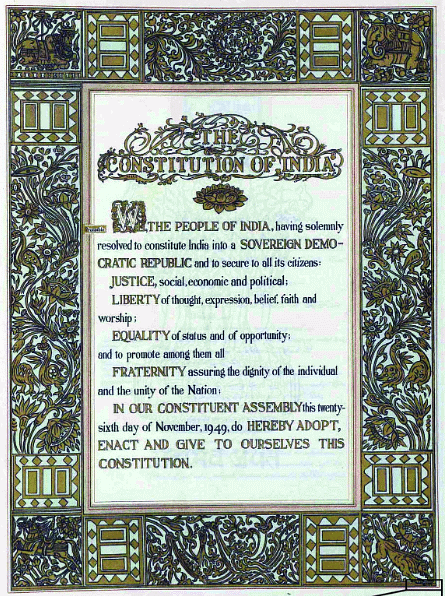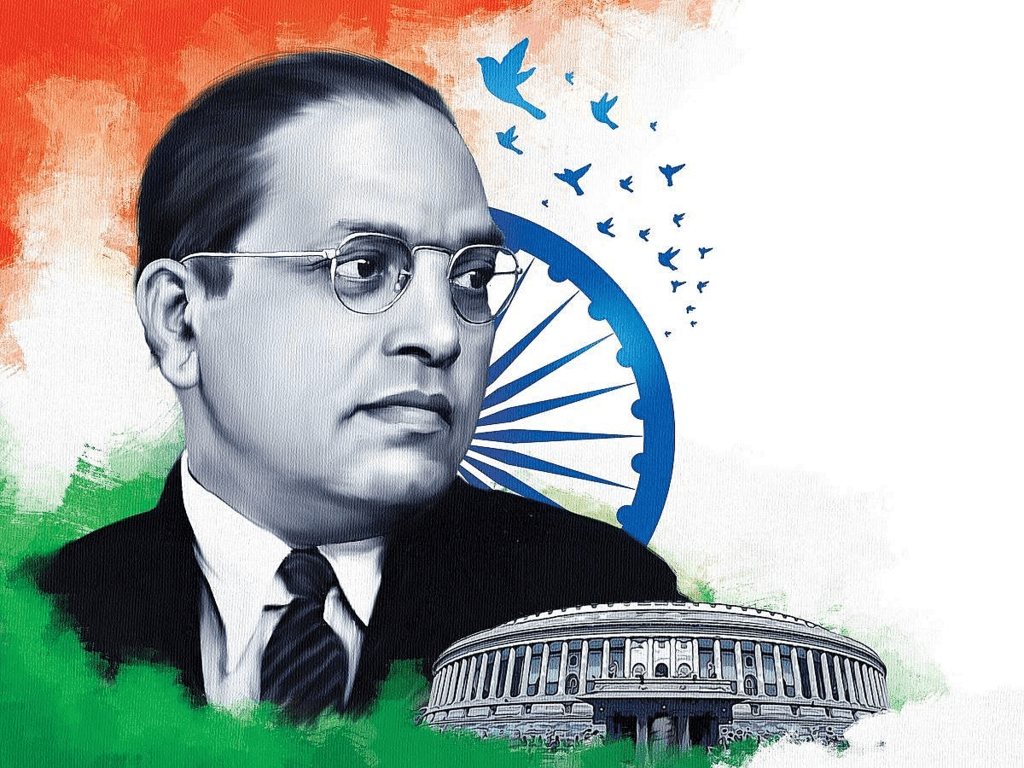Class 11 Political Science Very Short Questions With Answers - Constitution: Why And How?
Q1: What is the Necessity of The Preamble?
Ans: The Preamble is like an introduction to the Constitution. It is a summary of the objectives and the basic philosophy of the Constitution. The courts use the Preamble to clarify the meaning of the law whenever there is an ambiguity. It reflects the spirit and essence of the Constitution and guides its interpretation.

Q2: Under whose recommendations was the Constituent Assembly set up?
Ans: It was set up on the recommendations of the Cabinet Mission Plan, 1946.
Q3: When were the elections of the Constituent Assembly held?
Ans: The elections of the Constituent Assembly were held in July 1946.
Q4: Name the person who was chosen as the temporary chairman of the Constituent Assembly.
Ans: Dr. Sachidanand Sinha was chosen as the temporary chairman of the Constituent Assembly.
Q5: When was the Objective Resolution presented in the Assembly?
Ans: The Objective Resolution was presented on 13 December 1946 in the Assembly.
Q6: Is the Indian Constitution a living document?
Ans: Yes, it is a living document. It keeps on amending old laws as and when required, as per Article 368 of the Constitution, which provides the procedure for amendments.
Q7: Who moved the Objective Resolution in the Constituent Assembly?
Ans: Pt. Jawaharlal Nehru moved the Objective Resolution in the Constituent Assembly.
Q8: How many constitutions did Nepal have?
Ans: Nepal had six (1948, 1951, 1959, 1962, 1990 and 2015) constitutions.
Q9: Which institution was in the forefront of the struggle for a popularly elected Constituent Assembly in Nepal?
Ans: The Communist Party of Nepal (Maoist) was at the forefront of the struggle for a popularly elected Constituent Assembly in Nepal.
Q10: When did Nepal become a democratic republic?
Ans: In 2008, Nepal became a democratic republic.
Q11: Who said, “We must make our political democracy a social democracy.”
Ans: Dr B.R. Ambedkar said, “We must make our political democracy a social democracy.”

Q12: How many members were there in the Constituent Assembly?
Ans: 299 members were there in the Constituent Assembly.
Q13: Which provision of the Constitution was passed without any debate?
Ans: Universal Suffrage was passed without any debate.
Q14: Who is known as the Father of the Indian Constitution?
Ans: Dr. B.R. Ambedkar is known as the Father of the Indian Constitution.
Q15: From which country was the idea of the rule of law taken?
Ans: The idea of the rule of law was taken from the British Constitution.
Q16: What is society?
Ans: Society is a group of people who come together and form relationships. When these relationships get institutionalised, it constitutes a society.
Q17: Why are certain rules necessary for society?
Ans: Certain rules and understandings are very necessary for observance by the members of society so that their relationships are properly maintained. These rules help in maintaining discipline and realising the objectives of society.
Q18: What is the Constitution?
Ans: The Constitution is a body of rules, regulations, understandings, and modes of behaviour based on which the government is constituted and run. The Constitution specifies the areas of function between the organs of the government. It also sets the mode of relationship between citizens and the state.
Q19: Why is the Constitution needed?
Ans: As stated, the Constitution is the body of rules, regulations, and common understandings; it is very much needed to achieve definiteness in the relations of citizens and different organs of the government. The Constitution may be written or unwritten. It also puts a check on rulers to prevent misuse of power.
Q20: What is Constitutionalism?
Ans: Constitutionalism stands for the check on the arbitrariness and whimsical behaviour of the ruler and ensures rule by rational decisions. It seeks to establish the rule of law for the welfare of the people. The Constitution is the product of constitutionalism. Constitutionalism also stands for rule by rational discussion, debate, and consent.
Q21: What is the Constituent Assembly?
Ans: A Constituent Assembly is a body of renowned persons who are engaged in discussion, debate, decision-making, and then drafting the Constitution. Most of the constitutions of world countries are written by Constituent Assemblies.
Q22: How much time was taken by the Constituent Assembly to write the Constitution?
Ans: The Constituent Assembly to write the Indian Constitution was constituted in 1946, and it completed the work on 26th November 1949. It took two years, eleven months, and eighteen days to complete the Constitution of India.
Q23: What are the main functions of the Constitution?
Ans: The Constitution is the DQ document whose main function is to demarcate the jurisdiction of organs of the government. It also suggests the composition of the government. It sets the relationship between the state and its citizens. The main function of the Constitution is to limit the powers of the government.
Q24: What is an unwritten constitution?
Ans: A written Constitution is in the form of a document, while an unwritten Constitution is based on understandings, traditions, usages, and conventions. An unwritten Constitution means observance of certain accepted modes of behaviour.
Q25: Name the main countries from where institutions and features are taken for the Indian Constitution.
Ans: The Indian Constitution borrowed features from several countries. Major influences include Britain (Parliamentary system, rule of law), USA (Fundamental Rights, judicial review), Canada (quasi-federal system, residual powers), Ireland (Directive Principles of State Policy), France (Liberty, Equality, Fraternity), and South Africa (administrative law and procedures).
Q26: How were decisions taken by the Constituent Assembly?
Ans: Taking decisions in the Constituent Assembly was not easy because of thorny issues. There were many people and groups with divergent opinions. But all the members were fired with a high sense of patriotism. Therefore, all the decisions were taken by consensus, which was possible due to the spirit of accommodation and cooperation.
Q27: What is the Preamble of the Constitution?
Ans: The Preamble is the introductory part of the Constitution, which gives the idea of forms of government, values, philosophy, and commitment of the Constitution. The Preamble helps in the interpretation of the Constitution.
Q28: What was the significance of the Cabinet Mission Plan?
Ans: The Cabinet Mission Plan was appointed by the British Government in 1946 to discuss the modalities of the Constituent Assembly with Indian leaders. Based on these discussions, the Cabinet Mission Plan gave its recommendations, on the basis of which the Constituent Assembly was constituted.
Q29: From where did the Constitution draw its authority?
Ans: The Constitution drew its authority from the Constituent Assembly, which was representative of the people. Therefore, ultimately, the people are the source of the authority of the Constitution. In the Preamble, the opening words are "We the people of India," which means the people support this Constitution.
Q30: How is India a Republic?
Ans: India is a Republic. This is clearly stated in the Preamble of the Constitution. India has an elected head in the form of a President. Therefore, India is a Republic.
|
43 videos|278 docs|39 tests
|
FAQs on Class 11 Political Science Very Short Questions With Answers - Constitution: Why And How?
| 1. Why was the Constitution created? |  |
| 2. How was the Constitution written? |  |
| 3. What is the significance of the Constitution? |  |
| 4. How can the Constitution be amended? |  |
| 5. What is the difference between the Constitution and the Bill of Rights? |  |

















